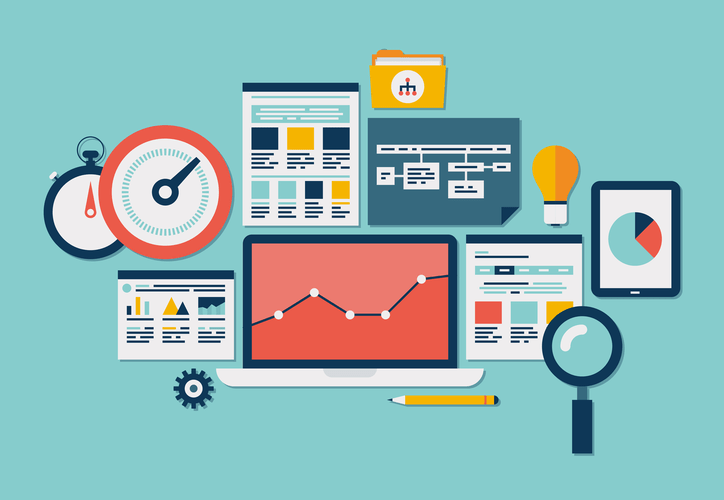It’s the following step in bringing elevated purchasing experiences for high-ticket gadgets into the house, altering retail endlessly. It might seem like a nascent idea, however spatial know-how is already a normal a part of our on an everyday basis lives. Every day, we use instruments like virtual house assistants, GPS, QR codes, and even VR/AR apps that utilize spatial computing.

69% of the respondents stated that the showroom had piqued their interest in a digital H&M model experience. With the assistance of Frontline Spatial, workflows for testing a car at Audi can be simplified by displaying important info as holograms in the proper locations on the car. Contents corresponding to element markings, dimensional information or documentation movies are all the time seen to the technician everywhere.
What Is Spatial Computing? The Definitive Guide
Spatial options connect the dots between digital twins, IoT, AI, the metaverse, and more. It’s a way of adjusting how we interact with digital content material and instruments to make laptop interactions really feel more immersive and pure. Spatial computing is a disruptive expertise already part of on a regular basis life and is slated to continue rising in leaps and bounds.
She’s taught at IE Business School and SDA Bocconi School of Management and holds bylines on the Harvard Business Review, Wired, and Forbes. Microsoft has outlined spatial computing as the power of gadgets to bear in mind of their environment and to characterize this digitally. Microsoft has mentioned spatial computing offers novel capabilities in human-robot interplay. Apple introduced Apple Vision Pro, a tool it markets as a “spatial computer” on June 5, 2023. Apple suggests the introduction of spatial computing as a model new category of interactive gadget, on the same degree of importance because the introduction of the 2D GUI. So yes, the eve of spatial computing devices, or spatial computer systems has began and they will help usher in the subsequent computing platform.
- As mentioned, all of the passthrough (and subsequently avoiding pure VR) experiences around the learning of recent abilities are fascinating to me, whether it’s about cooking, learning an instrument (check PianoVision), or studying a trade.
- Just like cellular or personal computing isn’t defined by just one know-how or one single piece of hardware, so too, spatial computing can’t be boiled right down to just one single thing.
- Volumetric rendering, holographic processing, and sensor fusion will enable interfaces to data and functions that we can’t but think about.
- For occasion, in the industrial world, you would possibly use an AR app or good glasses to overlay information about a machine’s internal features onto the outside of that gadget.
- With VR, we will place ourselves into digital worlds and work together with 3D content material inside these environments.
At the Training Centres of Audi Quality Assurance, Augmented Reality is used for environment friendly and faultless coaching of recent employees. Edge computing is a distributed IT architecture where consumer knowledge is processed on the periphery of the community, as near Spatial Computing the originating supply as possible. In many cases, the ability that these technologies can offer will increase once they function in synergy with one another, quite than in isolation.
From a gaming perspective, there are countless alternatives to combine gameplay with the world round. Hide behind the couch to keep away from enemy hearth in an FPS, solve escape room experiences in your bed room, or create and handle complicated cities in your lounge.The future seems shiny, I gotta put on [spatial computing] shades. Even headsets and wearable units are becoming more advanced, allowing us to create new bodily, natural workflows.
Spatial Computing
In spatial computing, many corporations, not simply hardware corporations, have a task to play. Like in mobile computing, many firms have been pivotal in getting us to the place we are at present. While in a 2010 paper on connecting sensible objects, mobile computing is definied as the sphere of wi-fi communication and carry-around computers. Spatial computing can be used as a basic term that extends to applied sciences such as AR, VR and blended reality. VERSES has developed its COSM working system that integrates the varied flows of knowledge and analytics from the elements of spatial computing components.
It’s an rising field and the realm where we’ll see future computing advances. This second we arrive in today is partly because of the convergence of AI, computer imaginative and prescient, extended actuality, and so forth., permitting humans to make use of know-how in entirely different ways. As current work at VERSES with our prospects reveals, logistics and supply chain settings stand to learn greatly from spatial computing, which https://www.globalcloudteam.com/ might unlock greater productiveness by streamlining workflows and interactions between folks, objects, and machines. Spatial computing brings the physical world and the digital world together in a far more significant means than ever, inextricably linking our world and the web panorama. It’s an oldie but a goodie— There’s one thing very punk rock DIY concerning the MoMAR concept— a group of artists leveraging augmented reality to overlay digital art onto traditional artistic endeavors in galleries.
Examples Of Spatial Computing
The new year is here and a variety of the tech sector’s greatest announcements are simply across the corner. The Consumer Electronics Show (CES) takes place this week, and we shall be listening to a lot more about spatial computing and blended actuality from the companies keynoting and exhibiting at one of many tech world’s biggest occasions. Just like cellular or private computing isn’t defined by only one know-how or one single piece of hardware, so too, spatial computing can’t be boiled right down to only one single thing. From units to software to telecommunications and past, we wouldn’t be succesful of reap the advantages of cell computing if it weren’t for the various elements that have superior in parallel to lead us to using a fairly small supercomputer in our palms.
Humans are naturally spatial beings that understand and engage with the world volumetrically, so spatial computing guarantees to return us to spatial pondering that may be very often misplaced as we age and once we are compelled to translate our creativity into flat surfaces. Its promise is to make us more productive, efficient, artistic and facilitate communication with others. Spatial computing can finally result in making better selections, whether or not in business or in different elements of our lives. It’s an evolutionary technological shift away from static devices that should grasp on our walls, sit on our desks, or relaxation in our palms to gadgets that start to fade into the background and permit us to go back to focusing on the physical area around us, albeit augmented.
In short, spatial computing makes use of integrated know-how to mirror how individuals interact with the 3-dimensional world. All these options are only possible as a result of the technology of laptop techniques has evolved. Instead, the hardware is now so small that it might possibly even fit into good spatial computing glasses. Spatial computing is a time period that you will see increase in use across tech news and tech announcements within the months to return, but it nonetheless is in its infancy. It will take several years for Spatial Computing to evolve into its full potential and influence enterprise and the way we have interaction with one another and with technology in the identical way or in an even more impactful way than the previous phases of computing have. The age of AI hardware, smartglasses, and spatial computing is right here – and you may help shape that future right now.
The spatial computer will perceive the wearer and their physical house, which in turn turns into updatable and interactive in real time. It will permit for more intuitive and natural interactions with our computers and enables our gadgets to higher perceive, map, and navigate our physical setting. In some methods, it allows us to work together with the virtual world with the same ease we do the bodily world.

This platform can sense real-world data through cameras and sensors, course of it in real time to know the context of the captured house, and display content material onto the physical environment to overlay content material or create fully digital environments. Spatial computing brings digital information and experiences into a bodily environment. It takes into consideration the position, orientation, and context of the wearer, in addition to the objects and surfaces round it. It makes use of a new, superior sort of computing to know the bodily world in relation to virtual environments and the wearer.
Spatial computing is commonly a posh term to outline because it’s an “umbrella” concept covering quite a lot of applied sciences. In the age of hybrid work, spatial applied sciences are more and more well-liked as companies look to bridge the hole between the digital and physical worlds. The leading expertise company promised to remodel the prolonged reality space with an innovative MR headset and the world’s first spatial computing working system.
However, at its core, spatial computing defines how we as humans work together with our surroundings. This means, that the human mind naturally processes and integrates info from our instant setting when it comes to spatial relationships. Our physical distance from another particular person, our body’s relationship to gravity, and commuting a well-known route are just some examples of this always-online system. The world market for spatial computing is expected to reach a powerful USD 620.2 billion by 2032, as reported by Market.us, reflecting its rising demand and transformative potential across industries. Spatial computing is already here, and it’s considerably impacting each trade.
It does this by using emerging interfaces like wearable headsets that have high-resolution cameras, scanners, microphones, and other sensors constructed into the gadget. New interfaces come in the form of hand gestures and finger actions, gaze monitoring, and voice. GPS, Bluetooth, and different sensors make creating digital content with physical context attainable. Today’s rudimentary AR that we expertise on our telephones is planting the seeds for tomorrow’s spatial computing.

 Offers free spin
Offers free spin